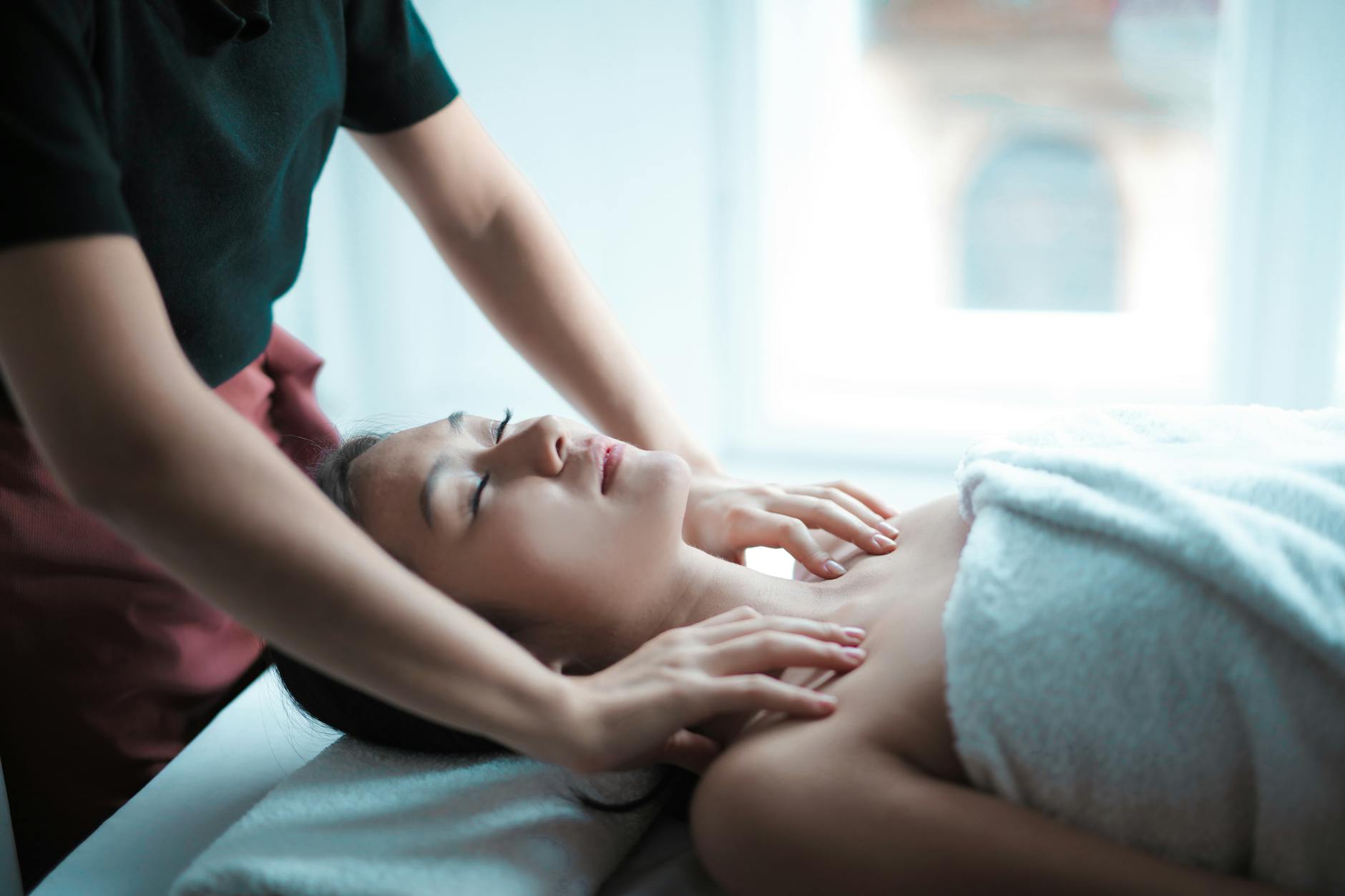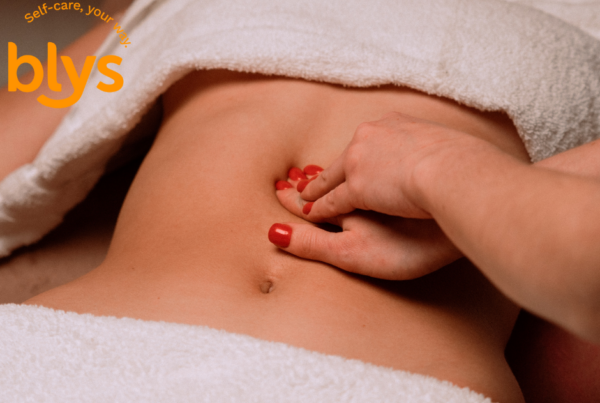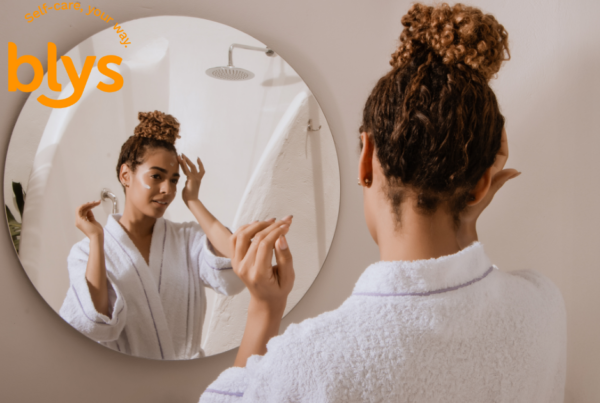
For many Brits, long hours at a desk have become the norm. Between home offices, constant screen time, and digital fatigue, it’s no surprise that muscle tightness and stress build up each day. Left unchecked, this tension can affect both focus and wellbeing.
Professional services like corporate seated massage are on the rise, with businesses recognising the benefits of supporting staff wellness. Still, daily habits play an important role in bridging the gap between professional care and everyday comfort.
That’s where self-applied seated massage comes in. With just a chair and a few minutes, you can release tension, improve circulation, and reset your body no special tools required. This guide will share simple methods you can use anywhere, offering practical support for a healthier, more balanced workday.
The Science of Seated Massage and Tension Relief
Most people think of massage as a luxury or a way to “treat yourself”, but science shows it goes far deeper. Seated massage in particular is designed for busy people, the kind who spend long hours at a desk and need relief without lying down or setting aside large chunks of time.
By targeting specific pressure points, it helps the body reset and supports overall wellbeing in surprisingly effective ways.
How seated massage works
- Stimulates skin and muscle pressure receptors that signal the nervous system.
- Activates the parasympathetic “rest-and-digest” response, reducing stress signals.
- Improves circulation and lymphatic flow, easing muscle tightness and stiffness.
Research-backed benefits
- Massage lowers cortisol and boosts feel-good hormones: Studies show massage can lower cortisol, the body’s main stress hormone, by around 30%, while raising serotonin and dopamine, which support mood and focus.
- Better focus during the workday: Quick chair sessions are linked to sharper concentration and improved productivity. That’s why many businesses now integrate seated massage into wellness programs
- Physical recovery and circulation support: Massage increases blood flow, helping deliver oxygen and nutrients to tired muscles while reducing stiffness. For those spending long hours at a desk, even short seated techniques can make a difference.
All of this suggests seated massage isn’t just about comfort. It’s a practical, evidence-backed way to manage tension, support focus, and balance the stress of daily routines. By combining simple self-massage methods with occasional professional care, it’s possible to create a long-term approach to healthier living.
Preparing for a DIY Seated Massage
Getting ready for self-massage is just as important as the techniques themselves. The right setup allows you to release tension effectively without straining other parts of your body.
Best chair posture for self-massage
Before starting any massage technique, it’s important to position your body correctly. Good posture provides stability, reduces unnecessary strain, and makes your self-massage more effective.
- Sit with your back supported and both feet flat on the ground.
- Keep shoulders relaxed and head aligned with your spine.
- Use armrests for support rather than leaning forward, which creates tension in the upper back.
- Adjust your chair height so your knees are at a right angle, easing pressure on the lower back.
These small adjustments may seem simple, but they create the right foundation for tension relief. By aligning your body before you begin, you ensure each technique works with your muscles rather than against them. Proper posture not only prevents additional discomfort but also turns your seated massage into a more restorative and comfortable routine.
Environment setup
Creating the right environment sets the tone for an effective DIY seated massage. A calm space helps the body shift out of work mode and into relaxation, making every technique feel more restorative.
- Choose a quiet spot where interruptions are unlikely; even a corner of your home office can work.
- Reduce distractions. Dim the lights, silence notifications, and close your laptop screen to signal a mental break.
- Begin with mindful breathing, taking slow inhales and exhales to prepare your nervous system.
- Add light stretches, such as shoulder rolls or gentle neck tilts, to release surface tension before massaging.
A few minutes of preparation can turn your massage from a quick fix into a mini reset, leaving you refreshed and ready to return to your day.
Massage chair alternatives
Not everyone has access to a dedicated massage chair, and the good news is that you don’t need one to experience relief. While specialised chairs offer built-in features for pressure and support, a standard office chair can work just as well when paired with good posture.
You can make small adjustments to improve comfort, such as placing a cushion behind your back or using a rolled towel for extra support. For those looking to create deeper pressure, everyday items like a tennis ball, massage ball, or even a firm cushion can be used by leaning gently against the chair.
These simple alternatives make seated massage accessible to anyone, proving that effective self-care doesn’t have to depend on expensive equipment.
Self-Applied Seated Massage Techniques
You don’t need special equipment or long breaks to feel the benefits of massage. With a simple chair and a few minutes, you can ease muscle tension, refresh circulation, and reset your focus. These methods are practical for home offices, workplaces, or even while travelling.
Below is a guide to easy seated massage techniques. Each one is simple to follow and targets common areas of strain:
| Technique | How to Do It | Where It Helps |
| Neck Release | Place your thumbs at the base of your skull, applying gentle pressure while slowly tilting your head side to side. Repeat for 30–60 seconds. | Relieves stiffness in the neck and eases tension headaches. |
| Shoulder Pinch & Roll | Use your opposite hand to pinch the trapezius muscle (between neck and shoulder), then roll it between your fingers. Switch sides. | Reduces tightness from desk posture and stress. |
| Upper Back Knuckle Press | Make gentle fists, place them between your back and the chair, then lean back slowly to apply pressure. Hold for 10–15 seconds, then shift positions. | Releases tension in the upper back caused by slouching. |
| Hand and Wrist Massage | With one hand, knead the base of your palm and stretch your fingers back gently. Rotate wrists in circles. | Relieves typing fatigue and supports mobility. |
| Scalp Circles | Place fingertips on your scalp and make slow circular motions, covering the whole head. | Improves circulation and mental clarity, reducing screen fatigue. |
| Quick Seated Techniques | Take 2–3 minutes to combine deep breathing with shoulder rolls, neck tilts, or gentle forearm squeezes. | Acts as a mini reset between tasks or meetings. |
These self-applied techniques are not a replacement for professional care, but they work as an everyday bridge. By combining them with occasional corporate massage or professional treatments, you create a balanced approach that supports both immediate relief and long-term wellbeing.
Tension Relief Exercises for the Office or Home
Self-massage works best when paired with small movements that keep the body mobile throughout the day. These quick exercises don’t require much space, making them easy to slot into short breaks at home or in the office.
Short stretches and micro-movements
Simple movements can prevent stiffness from building up:
- Shoulder rolls: Lift your shoulders toward your ears, roll them back, and release. Repeat 5–10 times.
- Neck tilts: Drop your ear toward one shoulder, hold for 15 seconds, then switch.
- Spinal twist: Sit upright, place your hand on the opposite knee, and gently rotate your torso to the side. Repeat on both sides.
Combining massage with breathing exercises
Pairing massage with slow, mindful breathing enhances its effects. For example, as you press into a tight muscle, inhale deeply, then exhale while slowly releasing the pressure. This calms the nervous system and helps the body let go of tension more easily.
Quick home office massage hacks
You don’t need specialised tools to create relief:
- A tennis ball placed between your back and the chair works as a trigger point release tool.
- A rolled towel behind the lower back can support posture and reduce strain.
- Even a firm cushion can be leaned into for extra pressure during self-massage.
These small exercises act as “mini resets” throughout the day, helping you stay comfortable, energised, and focused no matter where you work.
Feeling like your office stretches and self-massage aren’t quite enough? Discover how to take your relaxation further by choosing the right in-home massage and enjoy deeper, lasting relief.
Massage Chair Alternatives
When it comes to easing tension, many people assume a massage chair is the only real solution. While these chairs certainly have their place, they aren’t the only option or even the most practical one for everyone. With a few simple adjustments and tools, you can create an effective setup for relief right from your office or home chair.
- Hands-only methods: Techniques like shoulder pinches, scalp circles, or knuckle presses can be done without any equipment. They are ideal for quick resets in between tasks and can be repeated throughout the day.
- Portable tools: Massage balls, foam rollers, or handheld devices allow for deeper pressure and greater reach. They’re especially effective for areas like the upper back, where tension builds up from long hours at a desk.
- Affordable alternatives: Everyday items a cushion, a rolled towel, or even a tennis ball can double as massage tools. Leaning against them in your chair offers targeted pressure at very little cost.
- Massage chairs: Automated chairs provide consistent pressure and long sessions, but they can be bulky and expensive. While helpful, they aren’t essential for effective tension relief.
- When DIY isn’t enough: Persistent pain or workplace stress often requires professional support. Services such as corporate seated massage deliver expert care that complements DIY routines.
Ultimately, the best approach depends on your needs, budget, and environment. By blending simple hands-on methods with occasional professional support, you can enjoy the benefits of massage without relying solely on costly equipment.
When to Seek Professional Help
DIY seated massage can go a long way in easing everyday tension, but there are times when self-care is not enough. Recognising these moments ensures you don’t overlook more serious issues that require expert support.
Signs that DIY massage isn’t enough
If you experience chronic pain that doesn’t improve, recurring headaches linked to muscle tightness, or ongoing posture-related discomfort, it’s best to consult a professional. These symptoms often point to deeper imbalances that require more targeted techniques than self-massage can provide.
Why workplace wellness programs make a difference
Professional services such as corporate seated massage offer benefits that go beyond what you can achieve on your own. Trained therapists can identify problem areas, apply techniques with greater precision, and adjust pressure to suit individual needs.
Research also shows that regular workplace massage helps lower stress, improve focus, and boost overall employee wellbeing results that are difficult to replicate without professional guidance.
Self-care and professional care as a continuum
Think of DIY massage as daily maintenance and professional massage as periodic deep care. When combined, they create a balanced approach: small, regular resets through self-massage keep tension from building, while scheduled professional sessions provide deeper release and long-term support. Together, they form a sustainable plan for managing stress and protecting your health.
Blending Self-Care with Professional Care
Daily tension is almost unavoidable in a world of long work hours, digital fatigue, and busy schedules. DIY seated massage techniques offer a simple and effective way to take control of that stress. A few minutes of self-massage, paired with stretches and mindful breathing, can keep discomfort from building up and provide much-needed relief throughout the day.
At the same time, self-care has its limits. Professional massage adds another layer of support, delivering targeted techniques that address deeper muscle tension and chronic stress. For Brits working in high-pressure or desk-based jobs, this balance is key quick daily resets through self-massage, combined with scheduled professional sessions for lasting results.
Blys makes professional care accessible by bringing qualified therapists directly to you, whether at home or in the office. Services like corporate seated massage are designed to complement your own efforts, ensuring wellbeing isn’t left to chance.
Think of self-massage as maintenance and professional massage as deeper treatment. Together, they create a sustainable wellness routine that supports both immediate comfort and long-term health.
Start small by trying one or two seated massage techniques today. And when you’re ready for extra support, book a professional session with Blys to take your tension relief to the next level.





